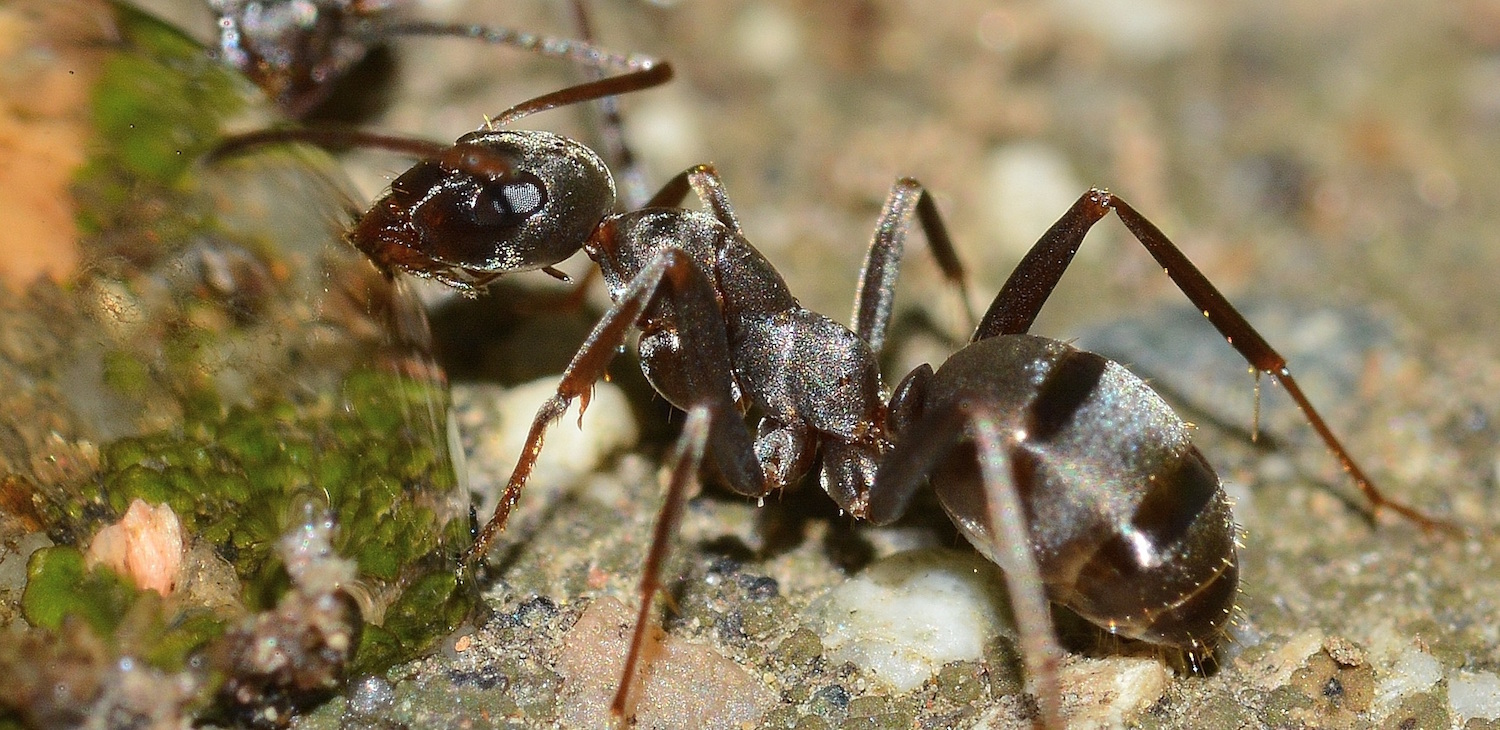 Evolution & Behaviour
Evolution & Behaviour
Saving the injured: The value of rescued veterans in a predatory ant species
Never leave behind an injured man...likewise do ants.

In general, we imagine ants as little pieces of something bigger, with the value of the individual being marginal, even sacrificing themselves if necessary for the good of the colony. Matabele ants (Megaponera analis) are a specialized termite predator of sub-Saharan Africa. In the early morning and evening hours they leave their nest in raiding parties of up to 500 ants to kill termites at their foraging sites (where they are more vulnerable than inside their nests). Termites though developed ways to defend themselves against predators: a special caste of soldier-termites have developed large heads with strong jaws to fend off and kill predators that are out for an easy snack. Matabele ants, being specialized on overcoming this defenses, easily overwhelm the termites' defenses and after 10-15 minutes have killed up to 1000 termite workers which they then carry back to their nest. These battles come at a cost though; some of the ants loose legs and antenna or have termite soldiers clinging to them after the fight. Remarkably we found that after the hunt nestmates take care of their injured by carrying them back to the nest.
We now wondered if this behaviour was truly focused on injured individuals? If so what was the mechanism regulating it and what was the value of these injured ants for the colony?
To answer the first question we presented the ants during their return journey with artificially injured ants (by cutting off two legs of healthy ants). These ants were always helped, in contrast to dead or healthy ants. Being now certain that this behaviour was focused on injured ants we could move on to more detailed observations.
Through experiments with different ant glands, we found out that injured ants gave out a "call for help" after the fight with pheromones in their mandibular gland. This attracted their nestmates, which started to antennate (investigate) the injured individual. The injured ant then assumed a fetal position (pulling in its legs) facilitating thereby its transportation and got carried back to the nest. Interestingly the help didn't stop there. If the injured ant still had some termites clinging on to its legs they got removed inside the safe confounds of the nest, thereby making her again a fully functioning member of the colony.
What happens though with the ants that lost one or two legs? These ants carry permanent injuries, which should be a major handicap. Directly after the injury, these ants move roughly 30% slower than healthy ants, but after only 24 hours they adapt their locomotion with the remaining legs so that they reach running speeds similar to healthy ants, making them again useful members for the colony.
But why do these injured ants not simply return by themselves to the nest? The reason is simple: due to their injuries they cannot keep up with the returning raid, thus becoming isolated from their nestmates and thereby easy prey for spiders or other predatory ants. Hence roughly a third of the injured ants would die during the return journey if not helped. All of these injured veterans (if helped) are observed to participate again in future hunts against termites, contributing again fully to the colony. This allows the colony to be up to 28% larger than a colony that would not help their injured.
This study was the first detailed observation of a behaviour focused on injured individuals that were in no imminent threat of death, but were under an abstract threat through an increased mortality risk if not helped. This shows that rescue behaviour can evolve even in species that are very likely not aware of the implications of their behaviour (reduced predation risk) and through mechanisms that have nothing to do with empathy (in our case its chemical communication).
Original Article:
Frank E, Schmitt T, Hovestadt T, Mitesser O, Stiegler J, Linsenmair K. Saving the injured: Rescue behavior in the termite-hunting ant Megaponera analis. Science Advances. 2017;3(4):e1602187. doi:10.1126/sciadv.1602187.Next read: Amoebas trap bacteria using nets of DNA: the same mechanism as human immune cells by Lukáš Novák
Edited by:
Massimo Caine , Founder and Director
We thought you might like
The lingering effects of parental care and its role in evolutionary change
Jan 27, 2016 in Evolution & Behaviour | 4 min read by Rebecca KilnerChimpanzees Trust Their Friends
Apr 14, 2016 in Evolution & Behaviour | 3.5 min read by Jan EngelmannLab-life: the afternoon siesta of the fruit fly
Jul 13, 2016 in Evolution & Behaviour | 3.5 min read by Edward GreenMore from Evolution & Behaviour
Cicada emergence alters forest food webs
Jan 31, 2025 in Evolution & Behaviour | 3.5 min read by Martha Weiss , John LillSize does not matter: direct estimations of mutation rates in baleen whales
Jan 29, 2025 in Evolution & Behaviour | 4 min read by Marcos Suárez-MenéndezThe Claws and the Spear: New Evidence of Neanderthal-Cave Lion Interactions
Jan 22, 2025 in Evolution & Behaviour | 3.5 min read by Gabriele RussoA deep-sea spa: the key to the pearl octopus’ success
Jan 20, 2025 in Evolution & Behaviour | 3.5 min read by Jim BarryFeisty fish and birds with attitude: Why does evolution not lead to identical individuals?
Aug 31, 2024 in Evolution & Behaviour | 3 min read by Lukas Eigentler , Klaus Reinhold , David KikuchiEditor's picks
Trending now
Popular topics


